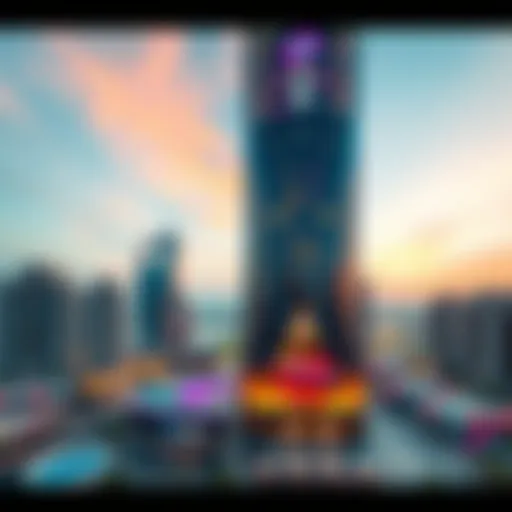Exploring Al Yousuf Building: A Dubai Landmark
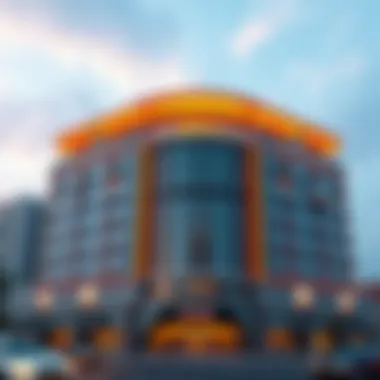
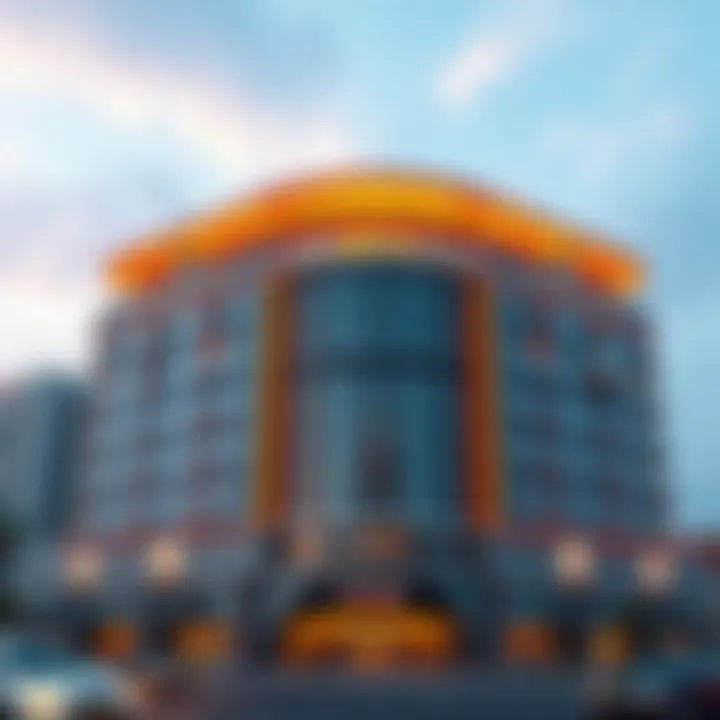
Intro
The Al Yousuf Building stands as more than just another structure in the rapidly changing face of Dubai. It symbolizes the city’s relentless march toward modernity, blending ambition and creativity. As visitors and locals traverse the lively streets surrounding this iconic edifice, they are greeted by a narrative woven through its design and context within the city’s fabric. Understanding Al Yousuf Building opens a window into the essence of Dubai’s urban development, providing insights not only into architectural aesthetics but also into the broader cultural landscape.
In this exploration, we will dissect various facets of Al Yousuf Building: from its inception to its architectural significance, along with the neighborhood dynamics that play a crucial role in shaping its identity. By doing so, we seek to illuminate the complexities and contributions of this landmark—both for residents of Dubai and for those who may be visiting, as well as for real estate professionals seeking a deeper contextual understanding of the areas they work in.
Neighborhood Features
Landscaping Highlights
Walking around Al Yousuf Building, one can’t help but notice how thoughtful landscape design complements the architectural grandeur. The surrounding green spaces are meticulously maintained, featuring an array of native plants that resonate with Dubai’s climate. Palms sway gently against the backdrop of modernity, offering a hint of the natural beauty that is often overshadowed by the towering skyscrapers. Benches invite passersby to sit and soak in the ambiance, adding an intrinsic warmth to an otherwise concrete jungle.
Paths lined with lights illuminate the area in the evening, turning it into a vibrant locale for both social gatherings and solitary strolls. Each tree and shrub has been chosen for both its aesthetic value and ability to thrive in the local environment, creating a serene oasis amidst urban hustle.
Architectural Styles
The design of the Al Yousuf Building is a fusion of traditional and contemporary styles, making it a fascinating subject for architectural enthusiasts. The facade showcases intricate detailing reminiscent of classical Islamic architecture, featuring geometric patterns and arabesques, yet it harmonizes these with sleek glass surfaces that reflect the dynamic city around it.
Such a blend serves not just as a visual delight but as a reminder of Dubai’s evolving identity. People often remark that approaching the building feels like stepping into a dialogue between history and modernity.
When examining structures like Al Yousuf Building, one may ponder how they encapsulate the spirit of progress. Its design not only caters to the functional demands of residents and businesses but also evokes a sense of pride.
Community Life
Local Events and Activities
Life around Al Yousuf Building isn't just about admiring the architecture. The neighborhood is lively with several events throughout the year. Local markets pop up, showcasing crafts, food, and culture, inviting participation from all corners. These activities are often organized in the adjacent plaza, transforming it into a communal hub where people gather, share, and celebrate diversity.
"The community events surrounding Al Yousuf Building are more than just gatherings; they embody the very ethos of Dubai as a melting pot of cultures.”
Lifestyle Amenities
For residents and visitors alike, the amenities surrounding Al Yousuf Building present a lifestyle that is both convenient and enriching. From chic cafes to upscale dining options, the culinary scene nearby caters to every palate. Fitness centers and beauty salons are within easy reach, providing ample opportunity for relaxation and self-care.
Furthermore, accessibility to public transportation ensures that the building is well-connected with the rest of the city. Whether one is commuting for work or simply exploring, navigating Dubai's urban landscape becomes an effortless exercise.
The Al Yousuf Building—through its position, design, and community amenities—serves as a microcosm of Dubai itself. For homeowners, visitors, and city planners, understanding this landmark is key to appreciating the blend of tradition and modernity that defines this vibrant metropolis.
For more insights into architectural trends and urban planning, readers can explore resources such as Wikipedia and Britannica.
As we continue to dive deeper, we’ll explore the history of the Al Yousuf Building, its cultural implications, and the vision behind one of Dubai’s most iconic structures, weaving together the threads that create a rich tapestry of urban identity.
Prelims to Al Yousuf Building
The Al Yousuf Building stands as a distinguished marker in Dubai's architectural tapestry, ushering in not just a visual delight but a significant narrative that intertwines history, culture, and innovation. This structure is emblematic of Dubai’s rapid urban evolution, demonstrating how modern needs can harmoniously blend with tradition. As we venture into this exploration, it’s crucial to acknowledge the various layers that define the essence of the Al Yousuf Building.
Historical Background
The Al Yousuf Building's construction began in the late 20th century, reflecting a period when Dubai was transitioning from a quiet trading port to a bustling metropolis. Its inception symbolizes the ambitions of its time, capturing a transition in architectural styles reflecting both global influences and local values. The building's design incorporates elements that are reminiscent of traditional Arabian architecture, offering a nostalgic nod to the past while firmly planting its feet in contemporary practice.
In terms of landmark status, the building's significance goes beyond its physical attributes. It serves as a testament to the vision of the Al Yousuf family, who have been prominent figures in the UAE's development. Over the years, the structure has witnessed numerous changes in the urban landscape, including shifts in population demographics and the influx of international businesses, making it a living archive of Dubai’s relentless drive toward growth.
Architectural Significance
Architecturally speaking, the Al Yousuf Building has carved its niche within Dubai's skyline, presenting a blend of elegance and functionality that is unmistakable. One of its most striking features is the façade, which employs local materials blended with modern techniques. This choice not only ensures resilience against the harsh desert climate but also reflects a commitment to sustainable practices, an increasingly relevant concern in urban architecture today.
Its design employs intricate patterns and motifs that pay homage to Islamic art, creating a visual dialogue between tradition and modernity. When one looks at the structure, what's evident is how it stands in stark contrast to many of the glass-and-steel edifices that define Dubai’s modern skyline while still harmonizing with them.
Moreover, the Al Yousuf Building serves a vital purpose beyond aesthetic appeal. It hosts various offices and commercial spaces, providing a bustling hub for professionals and entrepreneurs. This multi-functionality illustrates a growing trend in urban planning towards mixed-use developments, where residential, commercial, and cultural spaces coalesce.
"The blend of traditional and modern architecture in the Al Yousuf Building encapsulates the very spirit of Dubai's evolution."
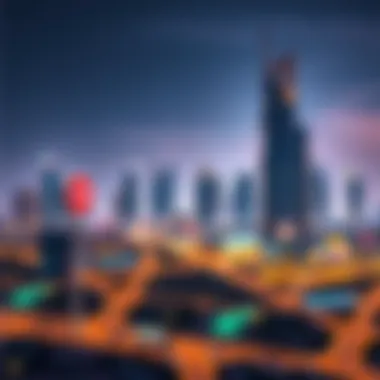
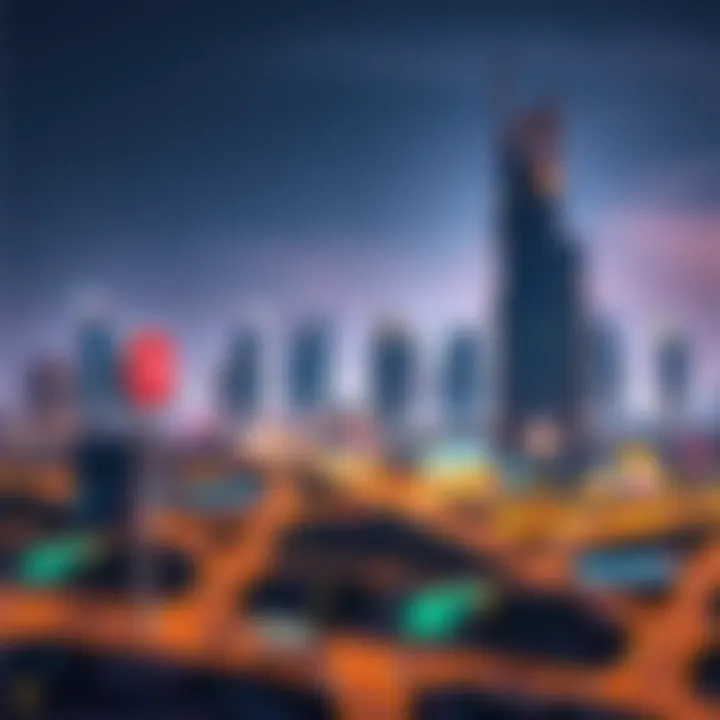
As we delve deeper into the specifics of its design features and cultural impacts, it becomes evident that the Al Yousuf Building is much more than just bricks and mortar. It stands as a cornerstone in Dubai’s urban narrative, echoing the aspirations of yesteryears while paving the way for the future.
Design Features of Al Yousuf Building
When it comes to the Al Yousuf Building, the design features are not merely a collection of visual elements; they embody a story, a culture, and a vision for what Dubai represents. The architectural structure speaks volumes about the fusion of modernism with traditional influences. This section aims to dissect the myriad aspects of its design, showcasing its exterior aesthetics, interior layout, and sustainable elements that make it a cornerstone of Dubai's urban fabric.
Exterior Aesthetics
The exterior of the Al Yousuf Building is a sight to behold. From afar, it captivates observers with a sleek silhouette that seems to dance in the sunlight. The use of reflective glass and steel gives the building a high-tech aesthetic that resonates well with Dubai's futuristic skyline. This reflects not only light but also the energy of the bustling city around it.
Color schemes employed in the design are nothing short of intentional. The primary palette includes shades of silver and cream that intermingle with greenery that hugs the foundation, availing a breath of fresh air and a hint of nature amid the urban chaos. Observers often note the asymmetrical shapes that contribute to the visual rhythm, enhancing the perception of movement.
Moreover, intricate details such as the balconies and terracing add visual variety, breaking the monotony found in purely rectangular high-rises. These thoughtful architectural choices accentuate an inviting atmosphere, compelling both locals and tourists to engage with the space more directly.
Interior Layout
Transitioning inside, the layout of the Al Yousuf Building is thoughtfully designed to enhance functionality while providing light and openness. Large lobby spaces create a welcoming entrance where natural light floods in through strategic placements of windows reaching upwards. This not only utilizes natural illumination but also connects the indoors with the outside environment.
The office spaces are constructed with modular designs, allowing businesses to adapt the layout according to their needs. This ensures flexibility in usage, an essential quality in the fast-paced commercial spheres of today. In addition, the incorporation of communal areas for interaction fosters a sense of belonging among occupants.
Occupying floor space harmoniously, the design encourages movement and flow. Hallways are wide enough to facilitate ease of transit while maintaining a sleek and open feel. The use of sound-absorbing materials in partitions gives the interior tranquility, essential for focused work.
Sustainable Elements
In modern architecture, sustainability is not just a trend but a necessity, and the Al Yousuf Building proudly embodies this ethos. A multitude of sustainable elements have been integrated into its design. For starters, the green roof contributes to insulation, reducing energy consumption while also providing space for urban greenery.
Rainwater harvesting systems are in place, allowing for the collection of rainwater that can be repurposed for landscaping or even in building amenities. This feature demonstrates a commitment to reducing water waste—critical in a desert region where every drop counts.
Additionally, energy-efficient lighting and climate control systems have been installed. This not only conserves energy but also maximizes occupant comfort, illustrating a holistic approach to environmentally conscious design. The juxtaposition of these sustainable features against the building's modern facade presents an image that is both forward-thinking and responsible.
As we navigate through the design elements of the Al Yousuf Building, it's evident that every aspect has been crafted with care and intention. The building stands not just as a structure but as a testament to Dubai’s commitment to live harmoniously within the built environment.
"One cannot simply view the Al Yousuf Building as just another high-rise; it is both a canvas and a message woven into the fabric of Dubai’s architectural narrative."
By thoughtfully integrating aesthetics, functionality, and sustainability, the Al Yousuf Building truly encapsulates what it means to design for the future.
Cultural Context of the Al Yousuf Building
The Al Yousuf Building plays a crucial role in understanding the cultural fabric of Dubai. It is more than just a physical structure; it embodies the aspirations, values, and identity of a rapidly evolving urban landscape. As one navigates through Dubai's bustling streets, the presence of this landmark reminds both resident and visitor that architecture is not only about aesthetics but also about the stories that define a community.
Influence on Local Architecture
The architectural style of the Al Yousuf Building has left an indelible mark on Dubai's local architecture. Its distinctive design elements speak volumes about the transition from traditional to modern architectural methods. The building incorporates materials and techniques that reflect both local and international influences, showcasing how cultures can intertwine to produce something unique.
- Modern Materials: The use of glass and steel pays homage to contemporary design while allowing for natural light to envelop the interior.
- Architectural Features: Elements such as large balconies and decorative facades bring in a touch of traditional Islamic art, bridging the past with the present.
This blend of styles not only sets a precedent for architects and builders in Dubai but also encourages a dialogue between the old and the new. It incentivizes future developments to consider cultural relevance and local identity in their designs, thereby enriching the architectural landscape of Dubai.
Role in Community Identity
Community identity is often framed by landmarks like the Al Yousuf Building. This structure stands as a symbol of progress, serving not just as a commercial hub but also as a gathering place that fosters a sense of belonging. Here are some key points worth considering:
- Public Spaces: The communal areas around the building invite interactions among diverse groups, enhancing social cohesion.
- Cultural Events: The Al Yousuf Building regularly hosts events that celebrate local culture, thus ingraining itself more deeply into the community's identity.
- Symbol of Progress: For many residents, the building signifies not only architectural achievement but also the broader narrative of Dubai's evolution as a global city.
"Architectural landmarks like the Al Yousuf Building serve as the heartbeat of a city, reflecting its evolution and aspirations."
For further reading about Dubai's architectural landscape, you can explore Wikipedia or visit Encyclopedia Britannica.
Also, community discussions often take place on forums like Reddit where residents share their experiences and insights about the city.
Al Yousuf Building and Urban Planning
The Al Yousuf Building plays a crucial role within the framework of Dubai's urban planning, not just as a physical structure but as a community centerpiece. Its design and location have a significant impact on how the surrounding area develops and communicates with the rest of the city. Understanding this relationship can enlighten homeowners, visitors, and even city planners regarding effective urban integration, community identity, and the future of urban spaces in this bustling metropolis.
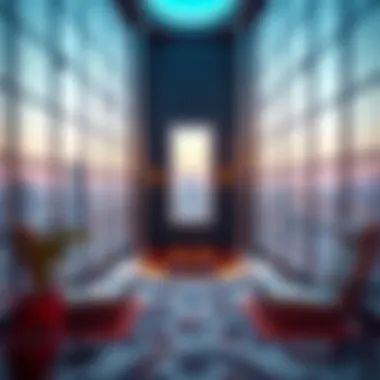
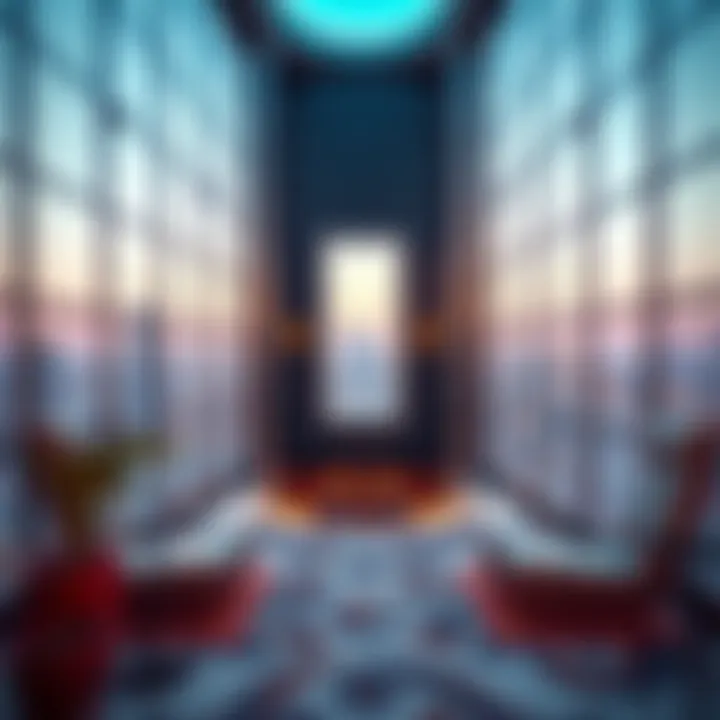
Integration with Surrounding Area
The integration of the Al Yousuf Building with its surrounding area highlights the significance of thoughtful urban planning in nurturing community and enhancing accessibility. Positioned strategically amidst mixed-use developments, the building serves as a touchstone for both locals and tourists. It embraces a blend of modern architecture and nostalgic design elements, creating a harmony that reflects Dubai's diverse cultural heritage.
Many features of the Al Yousuf Building echo throughout the surrounding area. For example, the architectural motifs found in the building are mirrored in nearby structures, fostering a sense of continuity and place.
- The building's façade uses local materials which tell a story of the environment.
- Art installations around the perimeter often draw inspiration from the unique architectural details of the building.
- Landscaping surrounding the site includes native plant species that echo the natural beauty of the Emirate's ecosystem.
This cohesive integration not only enhances aesthetic appeal but lays the groundwork for a vibrant community hub, where shops, cafes, and galleries co-exist with residential areas, enriching the local fabric.
Accessibility and Connectivity
A hallmark of the Al Yousuf Building is its remarkable accessibility and connectivity. The structure is linked to an intricate web of transport options, ensuring ease of movement for all. Its proximity to main roads and public transit hubs allows residents and visitors alike to navigate the urban landscape without hassle.
- Public Transport Access: With metro stations and bus stops just a stone's throw away, the building makes commuting convenient. This encourages sustainable transport choices, reducing reliance on vehicles and traffic congestion.
- Pedestrian-Friendly Paths: Well-maintained walkways connect the building to nearby parks and communal spaces, inviting leisurely strolls and enhancing overall foot traffic.
- Digital Connectivity: As Dubai pushes towards smart technology, the Al Yousuf Building integrates smart amenities that facilitate connectivity—essential for businesses seeking a modern operational environment.
The thoughtful approach to connectivity works hand-in-hand with the well-planned urban layout. As such, the Al Yousuf Building stands not only as an architectural marvel but as a symbol of careful planning and community development, fostering a vibrant lifestyle among its inhabitants.
Commercial Aspects of Al Yousuf Building
The commercial aspects of the Al Yousuf Building represent not merely a function of its architectural significance, but a pivotal element in understanding its role in Dubai’s economic ecosystem. This towering structure not only stands tall amidst the skyline, but it is also a bustling node for various business activities that contribute substantially to the city’s economic narrative. Nestled in a prime location, the Al Yousuf Building offers a strategic advantage for companies looking to establish or expand their foothold in the Middle Eastern market.
Business Opportunities
The opportunities for businesses within the Al Yousuf Building are varied and abundant. The building hosts a mix of both local and international firms, creating a dynamic commercial landscape. For entrepreneurs and companies aiming to tap into the flourishing Dubai market, the diverse tenant mix represents an array of business sectors ranging from finance to technology, which enhances networking and collaboration.
Some key features of the business landscape include:
- Flexible Office Spaces: The Al Yousuf Building boasts modern office facilities that cater to the needs of startups and established corporations alike. The adaptable layout allows businesses to customize their spaces according to their operational requirements.
- High Foot Traffic: Being located in a vibrant area, the building benefits from significant pedestrian traffic, which translates into valuable exposure for retail businesses situated on the ground floor. This is crucial for brand visibility and customer engagement.
- Networking Events: Regularly held networking and business events within the building facilitate connections, fostering partnerships that may lead to innovative ventures. The building's status as a business hub can not be understated.
In summary, the Al Yousuf Building is not just a physical structure but a catalyst for business growth and innovation in Dubai. Its strategic location, diverse tenant mix, and modern amenities create a rich tapestry of opportunity for any business wanting to make their mark.
Real Estate Insights
In terms of real estate, the Al Yousuf Building serves as both an investment opportunity and a model for commercial property development in Dubai. Potential investors are often drawn to the area due to its rapid growth and the continuing influx of both local and international businesses. Here are several insights that underscore the real estate value of the Al Yousuf Building:
- Appreciation of Property Value: Properties in the vicinity, including the Al Yousuf Building, consistently demonstrate how surrounding developments can lead to long-term appreciation. As infrastructure improves and the surrounding districts grow, the value of spaces within and near the building is poised to rise.
- Attracting Diverse Tenants: With a range of office sizes and types, a variety of businesses from different sectors find the building appealing. This diversification not only reduces risk for property owners but also strengthens the commercial viability of the entire area.
- Government Initiatives: As part of Dubai's strategic vision for economic diversification, several government incentives encourage investment in commercial real estate. The Al Yousuf Building is benefitting from these efforts, indicating that it's poised for sustained growth in interest and value.
Ultimately, the Al Yousuf Building encapsulates what modern commercial real estate should aspire to be—flexible, strategically located, and economically viable. Its role is paramount within Dubai’s ever-evolving urban atmosphere, representing a fusion of architecture and opportunity at its best.
Lifestyle Offerings Near Al Yousuf Building
The Al Yousuf Building is more than simply an architectural landmark; it is located in an area bustling with life and vibrance. This section delves into the various lifestyle offerings conveniently situated around the building, emphasizing amenities and cultural highlights that enhance the experience of residents and visitors alike.
Nearby Amenities
Life around the Al Yousuf Building exemplifies modern urban living. Access to essential amenities plays a crucial role in this dynamic environment. Nearby shopping centers, such as the popular Mall of the Emirates, provide a comprehensive retail experience, featuring branded outlets, eateries, and entertainment options, making it a prime spot for both locals and tourists.
Key amenities include:
- Grocery Stores: Al Yousuf Building is within striking distance of various supermarkets like Carrefour and Lulu Hypermarket, making daily shopping a breeze.
- Healthcare Facilities: Proximity to healthcare is vital. The Dubai Health Authority operates clinics and hospitals nearby, offering reliable medical services.
- Public Transport: The building is strategically located near metro stations and bus stops, enhancing mobility options for everyone.
- Leisure Spaces: Parks and recreational areas such as Zabeel Park offer green spaces for relaxation and outdoor activities, promoting an active lifestyle.
These amenities not only enhance convenience but also foster a sense of community among residents, marking the Al Yousuf Building as an ideal location for work-life balance.
Cultural Attractions
Cultural richness is a significant aspect of Dubai, and the vicinity of Al Yousuf Building does not disappoint in this regard. The area is peppered with cultural attractions that reflect the city’s diverse heritage and modern-day vibrancy. These include art galleries, museums, and performance spaces that serve as platforms for local and international artists.
Highlights of cultural attractions nearby include:
- Dubai Opera: A short distance away, this iconic venue is known for its stunning architecture and offers a range of performances, from opera to ballet, making it a cultural hub.
- Art Galleries: Districts like Alserkal Avenue are home to several contemporary art galleries that showcase local talent and international exhibits, catering to art enthusiasts.
- Cultural Festivals: Throughout the year, various cultural events and festivals occur within close reach, providing residents with opportunities to immerse themselves in the vibrant tapestry of Dubai’s cultural scene. Events such as Art Dubai or the Dubai International Film Festival often attract huge crowds, emphasizing the area as a cultural hotspot.
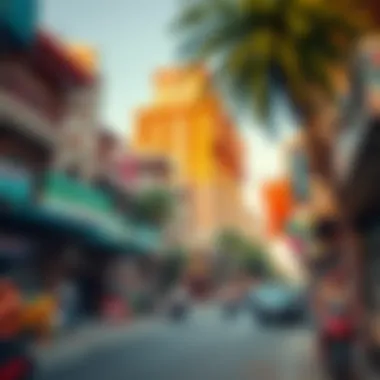
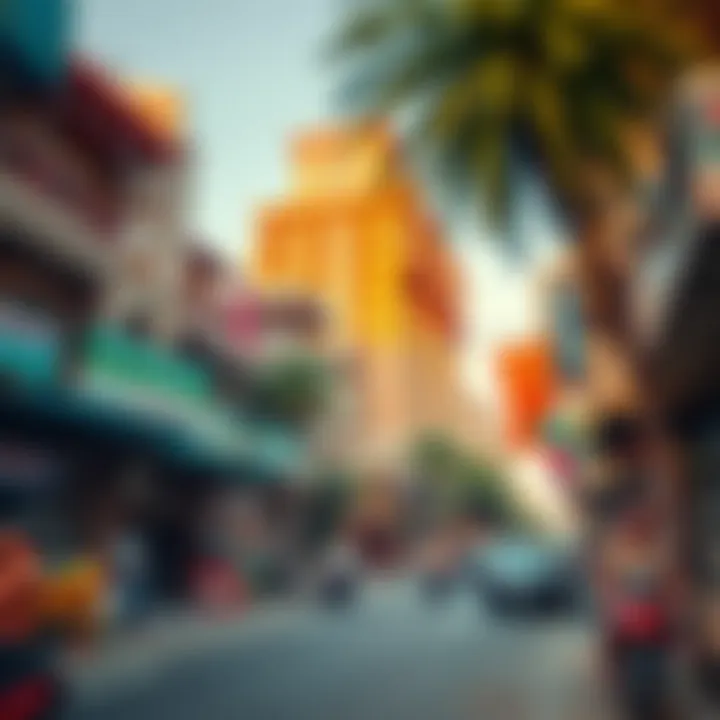
"Dubai is a melting pot of culture and modernity, and the offerings around Al Yousuf Building exemplify this perfectly."
With such lifestyle offerings, the Al Yousuf Building not only stands as a prominent structure but also as a gateway to Dubai's rich cultural and community life, making it an attractive place for potential residents and visitors.
Visitor Experience at Al Yousuf Building
Visiting the Al Yousuf Building extends beyond simply appreciating its architectural beauty; it’s about immersing oneself in a rich artistic and historical narrative that speaks volumes about Dubai’s progression. As a renowned landmark, the building embodies cultural stories woven into the fabric of urban development. For anyone wandering through Dubai, understanding the visitor experience here enhances the appreciation of the structure and its place in the city’s landscape.
Guided Tours
Guided tours of the Al Yousuf Building offer a remarkable pathway into its essence. These tours often begin with an introduction to the building’s history, detailing its inception and construction. Visitors not only receive a visual feast but also rich stories of architects' visions and the cultural influences that shaped its design. Tour guides, usually well-versed in both architecture and local history, share insights that are more profound than what a casual stroll or a quick read would provide.
- Interactive Elements: Many guided tours incorporate interactive segments where visitors can ask questions about specific details. Whether curious about the building materials or the design choices, visitors find themselves engaged and enlightened.
- Behind-the-Scenes Access: Some tours allow access to areas not typically open to the public. Entering offices or meeting spaces can give one a different perspective on how such an iconic structure functions in a modern city.
While price points can vary based on the season and demand, the investment offers enriching content that’s hard to replicate on your own.
Exhibitions and Events
The Al Yousuf Building also serves as a canvas for exhibitions and events, adding dynamism to the visitor experience. Regularly scheduled exhibitions feature local artists and designers, fostering cultural appreciation and community involvement. It’s not just a static building; it evolves through art and community events that reflect the zeitgeist of Dubai.
- Art Shows: Monthly art shows often draw attention to emerging talents or celebrate established artists, giving visitors something fresh to look forward to.
- Cultural Festivals: Events such as festivals coincide with the local calendar, offering residents and tourists a chance to explore the building’s intricate relationship with the community and its culture.
- Workshops and Seminars: Workshops are occasionally held, allowing participants to delve into various subjects, from architecture to the arts.
The blend of artistic expression and community engagement makes the Al Yousuf Building a beacon of cultural connectivity in Dubai.
To keep abreast of these exhibitions and events, an ongoing check of the official website or local listings can provide detailed information regarding upcoming showcases. Resources like Visit Dubai or Dubai Calendar are invaluable for staying informed.
Through guided tours and events, the Al Yousuf Building not only serves as a physical landmark but also as a spiritual hub for cultural exchange, enriching the experiences of all who visit.
Future Prospects for Al Yousuf Building
The future of the Al Yousuf Building is not only intriguing but crucial to the discourse surrounding Dubai’s continuous urban and architectural growth. This landmark stands as a testament to the relentless transformation occurring in the city. As economic trends shift and urban planning evolves, the building is positioned to play a significant role in the community and the larger environment.
Planned Developments
Looking ahead, several planned developments around the Al Yousuf Building highlight its potential evolution. These projects aim to enhance the building’s connectivity and operational efficiency. Some key points include:
- Modernization Efforts: There is a push towards updating the facilities within the building. Integrating smart technologies could make the space more efficient, appealing to modern businesses and residents.
- Landscaping Improvements: Future plans propose green spaces and parks in the surrounding area. This addition is meant to not only beautify the neighborhood but also create areas for residents to gather and connect.
- Mixed-Use Spaces: Transitioning parts of the building to accommodate mixed-use purposes may be on the table. This could open opportunities for retail, dining, or even cultural venues, supporting a vibrant community atmosphere.
These developments could further amplify the building's significance, making it a pioneering space for the next generation in Dubai.
Impact on Urban Landscape
The Al Yousuf Building is poised to leave a lasting imprint on Dubai’s urban landscape as various transformations take root. The potential impacts include:
- Economic Growth: The enhancements surrounding the building are likely to attract more businesses and investments, fostering economic dynamism in the area. Projects that draw in foot traffic can boost local economies and support nearby merchants.
- Cultural Significance: As the building evolves, its role as a cultural hub may expand. Initiatives like art exhibitions or community events could hinge on its facilities, adding layers to Dubai's cultural fabric.
- Community Identity: The Al Yousuf Building stands not just as a structure but as a representation of the community’s identity. Its future developments can reinforce this identity, ensuring it resonates with new and long-term residents alike.
In sum, the forthcoming changes surrounding Al Yousuf Building are not mere improvements; they symbolize Dubai's ambitious quest for progress and adaptability. The careful integration of modern elements while honoring the building’s legacy is a delicate dance that will define its future.
In reflection, this landmark's place in the urban planning landscape of Dubai suggests that its journey is far from over. Residents, investors, and urban planners should keep a keen eye on the Al Yousuf Building, as it continues to shape the narrative of this dynamic city.
Epilogue
The Al Yousuf Building stands as a beacon of progress in Dubai's ever-evolving urban landscape. It is essential to recognize how this structure does not merely serve its functional purposes but also embodies the spirit of innovation and cultural significance that characterizes the city. The discussion surrounding the building encapsulates its architectural relevance, its role in local culture, and its economic impact, providing a multifaceted view of why it is more than just a building.
Summary of Key Points
In this article, we have explored various dimensions of the Al Yousuf Building, emphasizing several key aspects:
- Historical Context: Understanding the building's origins helps appreciate its architectural journey and the evolution of Dubai as a whole.
- Architectural Features: The aesthetic and structural characteristics contribute to its landmark status, exhibiting a blend of modern design with cultural elements.
- Community Role: The building serves as a focal point for community identity, influencing both local architecture and social interactions.
- Urban Integration: Its strategic location and accessibility enhance urban functionality and demonstrate how it aligns with the broader planning initiatives in Dubai.
- Future Development: Looking ahead, the planned developments around the building promise to further cement its role in the urban landscape.
Reflections on Al Yousuf Building's Contribution
Reflecting on the Al Yousuf Building's contributions invites us to consider its legacy within the trajectory of Dubai's growth. The structure stands not just as a reminder of the past but as an active player in shaping local identity and culture. It fosters business opportunities, promotes tourism, and enhances community life.
Moreover, the building exemplifies how urban landmarks can evolve with the changing dynamics of city life, ensuring that they remain relevant and meaningful for future generations. As such, engaging with the Al Yousuf Building offers insights into the ambitious vision that drives Dubai, rendering it a symbol of possibility and progress.
"Landmarks like the Al Yousuf Building are the living memory of a city, reminding us of where we came from and inspiring where we are headed."
Thus, in concluding this examination, we should bear in mind that the Al Yousuf Building is more than just a tangible structure; it is an essential thread in the fabric of Dubai's urban narrative.











